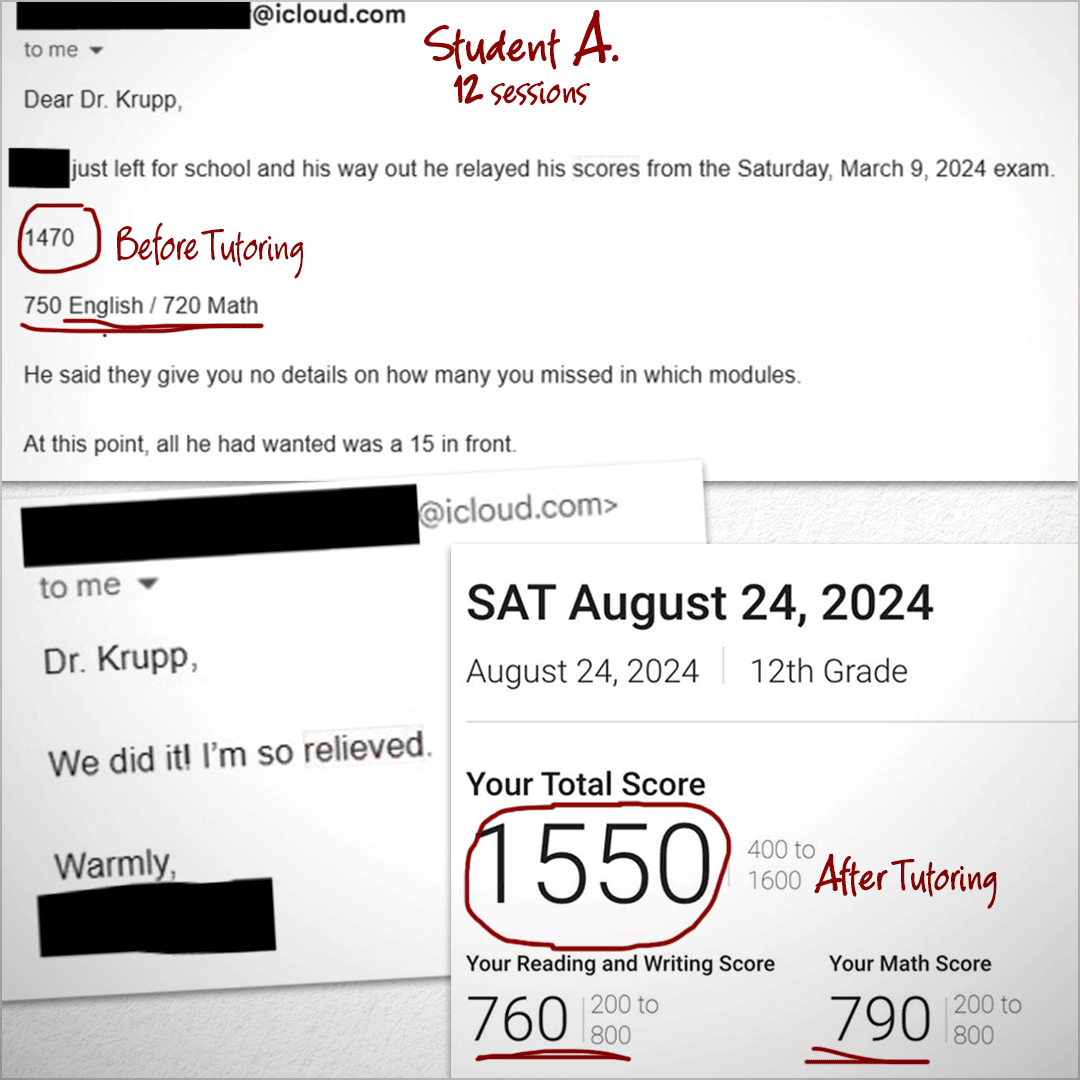Personalized SAT & PSAT Tutoring
Evidence of experience
I’ve worked with over a thousand high school students over the past 14 years, including developing SAT materials for major test prep companies. I’ve studied all the released digital SAT and PSAT tests inside and out. My goal is to help students overcome test anxiety and approach these exams with clarity and confidence.
Before / After scores: two student examples
Student A required 12 sessions, while Student B needed only one.
Based on my experience, every individual student's path is different, which is precisely the point of private tutoring! It all depends on the student's starting score, their goal score, and their willingness and ability to work independently between sessions.
Student A
After another six tutoring sessions, the student got what he wanted!
Student B
After JUST ONE tutoring session, the student jumped 160 points!



